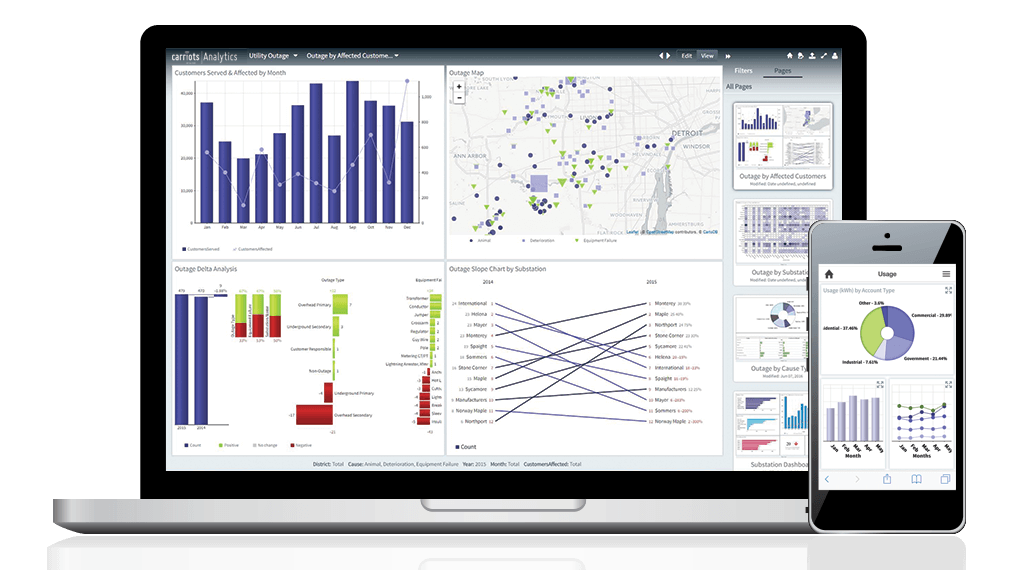
Design, digital twin, deploy: Altair’s IoT engineering software

THE DESIGN of any Internet of Things (IoT) device is a multidisciplinary, and therefore complex, process. It is vital to consider the entirety of the mechatronic device. Systems to consider include actuators, sensors, dynamic controls, graphical user interfaces, communications, data types, as well as physical structures. Additional levels of complexity come from any required human interactions and the intricate particulars of physical arrangements when machines are placed in a human-populated workplace.
Clearly, the most effective way of achieving all this is merely to deploy a physical prototype or two into the workplace. That isn’t viable, of course, on many levels, the least of which being economic constraints. No organization can afford multiple attempts to “get it right” in a complex manufacturing or industrial setting.
Altair‘s broad portfolio of CAE (computer aided engineering) tools allow the development of virtual devices so that the creation and production process of next-generation IoT is simplified and shortened to a remarkable degree – within the silicon space, not the (expensive) real world.
By careful application of specialist software from Altair, new product creation and development is suddenly economically viable, and it allows IoT companies to expand quickly into emerging markets or deploy better devices to their customers’ shop floors.
IoT deployments, of course, do not happen in a vacuum; this is why real-world testing still holds value. Altair’s expertise allows faithful emulation of deployments, and data to flow from the actual IoT deployment situation back into the design model. This informs and alters the silicon prototype accordingly.
As an example, Altair’s Flux package covers the effects of thermal and electromagnetic phenomena. These influences have been difficult to bring into any theoretical test rig, until now. Flux, even as a standalone product, allows a high degree of what-if planning well before any single physical component is machined.
Altair’s portfolio is widespread and, therefore, the company’s total offerings create the go-to solution set for IoT creators today.
Depending on where and how your IoT creation is to be deployed, Altair has the pertinent software elements to model, plan and design your product. If you need an in-depth analysis of thermal effects or the vibrational influences caused by physical structures, Altair provides CFD (computational fluid dynamics) solution AcuSolve. For physical stresses, strength and durability properties, there’s Optistruct as tech leverage. Even the electromagnetic complications associated with large structures can be analyzed to provide communications solutions like wireless sensors and radio network integration.
Altair’s partnership alliance program, which encompasses third-party expertise, provides further specialisms, can be deployed organically into the software gamut leveraged in a next-gen development process. Highly specific yet essential tools can be deployed as necessary. For example, Optenni Lab has expertise in RF communications solutions, but there are 60+ additional powerful utilities and options available.
This is the real-world application, modeled by intelligent algorithms and data, helping engineers and design professionals create innovative and efficient designs for your unique IoT concepts in their germinal, developmental, testing and manufacturing journey.
Altair’s solutions allow the creation of what has become known as a “digital twin” – a model that can react to the real-world’s data, which informs and alters the model before expensive and resource-hungry alterations or construction needs to take place.
By re-feeding actual operational data into the simulation framework, insights gathered do more than inform the developmental model. Rather, predictions of failure rates, maintenance requirements, and operational implications can be factored into the overall deployment picture, ensuring there’s a limit on possible unpleasant operating costs down the line.

Device shadows (or data twins) of complex devices can be altered as data results flow back into a simulation. Choosing astutely which data holds weight makes a notable difference. Choosing relevant data is determined as much by intended purpose and business value of the IoT device as it is by anything else – perhaps more so, in fact. Here, Altair’s Carriots Analytics and HyperStudy can be used in conjunction to capture, analyze and evaluate all available parameters, and ensure that only relevant information is used to optimize design.
By beginning with a simple model and then having software increase detail by a series of quickly iterating processes, real-world deployments are modeled accurately. The predicted ideal state of an IoT device is therefore mapped and can be examined under different what-if scenarios, with variations applied according to circumstances and requirements (physical, electrical, magnetic, communicative, etc.). This gives today’s IoT designers, engineers and manufacturers a clear advantage in this increasingly crowded marketplace.
Altair offers the complete solution for organizations wishing to invest in IoT creation, in industries from domestic appliance manufacturing to the space industry.
For information on your next product’s digital twin and Altair’s Internet of Things solutions, click here to be put in touch with a local representative.
READ MORE
- Enhancing Business Agility with SASE: Insights for CIOs in APAC
- 3 Steps to Successfully Automate Copilot for Microsoft 365 Implementation
- Trustworthy AI – the Promise of Enterprise-Friendly Generative Machine Learning with Dell and NVIDIA
- Strategies for Democratizing GenAI
- The criticality of endpoint management in cybersecurity and operations
